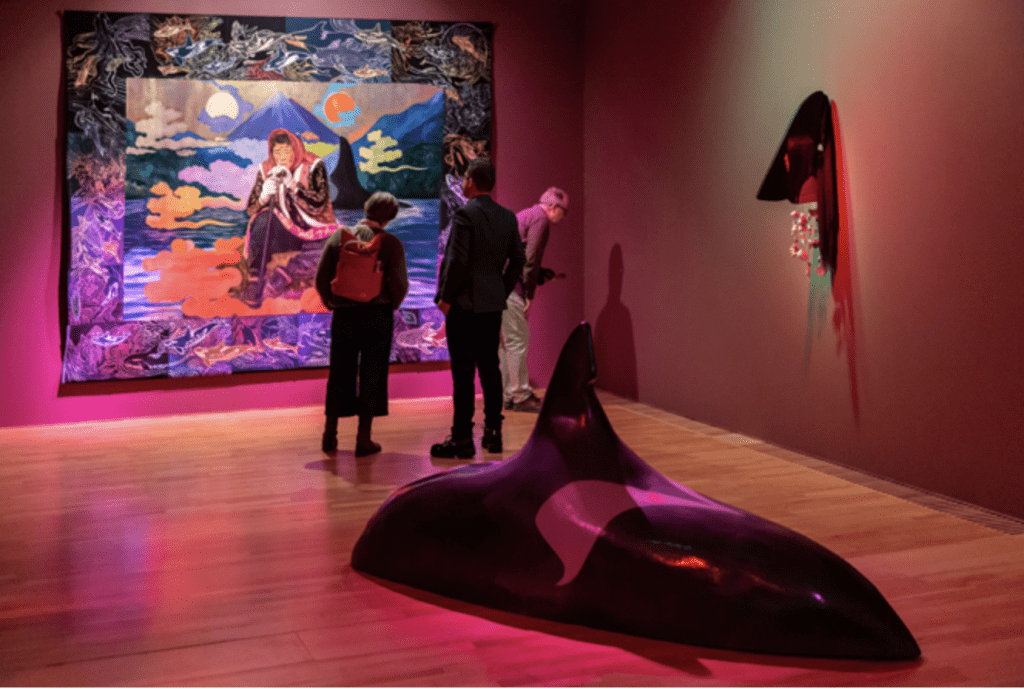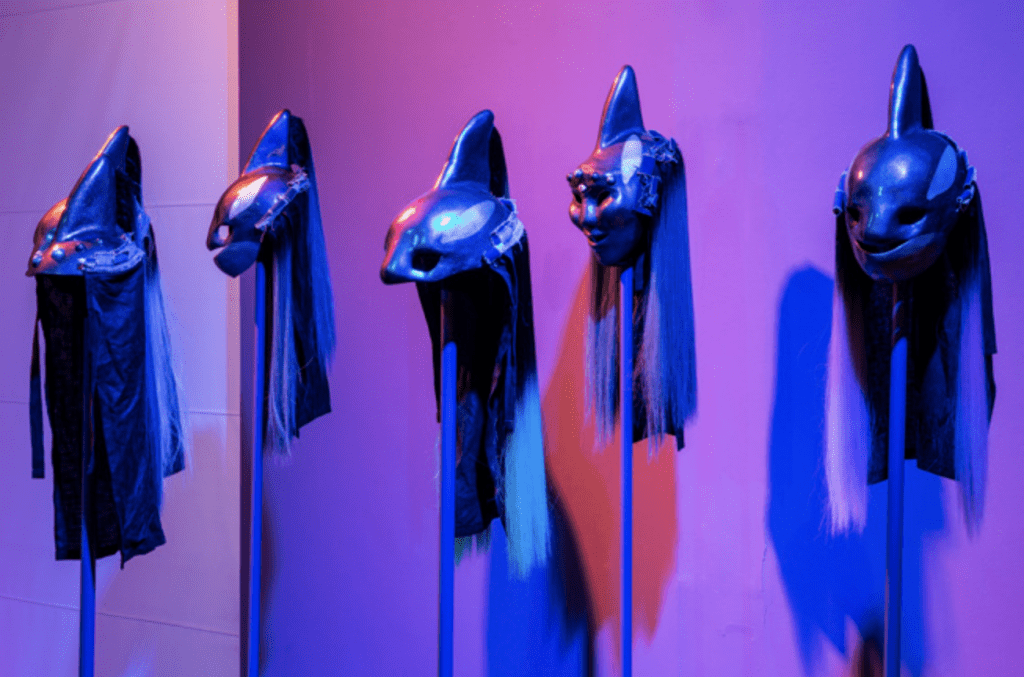For the third post in the Crossing Cultures’ Curriculum Advisors series Leejoo Chang reflects on her visit to the De La Warr Pavilion in Bexhill on Sea to see the exhibition by Korean-Canadian artist Zadie Xa: https://www.dlwp.com/exhibition/zadie-xa/
Many myths known in the world include Giants in their story. Some of these include the well known Gaia From Greek Mythology, Ymir from the Norse, and Pangu from the Chinese. Because time has passed and religions have changed, many myths and folklore have been lost, especially female giant stories, which could not survive through the harsh waves of misogyny. The historical study of folklore and myths about female gods are not as broadly documented, the ones that are known are mostly about pregnancy, childbirth, and motherhood.
MagoHalmi is a female Korean goddess; her name is Mago, and Halmi is a title for a respectful old lady. Her story of creating the Korean Peninsula is rather crude and simple, or in other words ‘poor’ compared to other myths. The Magohalmi story has many versions as it is folklore, but the most known storyline is this:
Long ago at the beginning of time, when everything was in chaos, Magohalmi woke up from her sleep, stood up and stretched up high. This stretching motion caused the sky and earth to divide, then as she emptied her bladder, she caused a huge flood and this made the seas and the rivers on the land. She scratched the earth with her hands, and this action created the mountains and valleys. She put the dirt that was scratched out into her skirt and moved to the south, but some chunks of earth fell out of holes in her skirt and became small islands in the sea. Then she felt hungry and tried to eat a huge rock. The rock was too hard, so she spat it out and the two pieces of rock became the highest mountains in the North and South of Korea. After all of this work, she disappeared and nobody saw her ever again.
Zadie Xa’s exhibition ‘Child of Magohalmi and the Echoes of Creation’ talks of this story briefly in the information text at. the entrance to the gallery at the De La warr Pavillion. Because this story is not only a myth, but also a bedtime story for children in Korea, the exhibition made me quite nostalgic. Though the story is more ridiculous than divine, it is great to imagine an ordinary, older lady making a whole peninsula in this way.
The exhibition included some masks, outfits and sculptures that were referenced by the sea and whales. When I first saw the masks, it seemed very much like ‘Tal’, a traditional Korean mask. The screen showed a message about the sea and the pollution on the coasts, which made me think about the environment, and how the exhibition was reflective from the Korean story of creation. The artist included photographs of the performance using the outfits and masks. These images were very similar to ‘Tal-Chum’, which is a traditional performance using masks and colourful outfits and performing ridiculous stories about the hierarchy.
This recreation of the mother goddess of Korea was astonishing for me to see at the exhibition because Zadie Xa’s artwork connected the traditional elements of story telling with modern multi-media art. The exhibition was a wonderful event, showing the beautiful mythology and performances of Korea. I hope we get to see more artists from other nations and cultures that are less well known in the future. The Crossing Cultures project gave me much inspiration, and it was great to be able to go and see the exhibition in Bexhill with the support of our school at the the University of Brighton.
Leejoo Chang is a BA Hons Graphic Design student.


